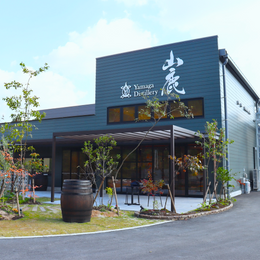Krug Champagne: How One House Pioneered The Multi-Vintage And Recreates The Most Cult Followed Champagne Dreams Each Year

Krug Champagne holds such esteem amongst wine lovers that even within a category that itself, that of Champagne, is already hallowed and put on the highest of pedestals, Krug still finds its way to the top. It's difficult to name any set of iconic Champagnes without including Krug, so much so that there's even a name for its most ardent fans - they call them Krugists. The Krug name, even as far reaching as its reputation is, is associated with great artisanship, which is always a tenuous balance between commerciability (that is really a matter of scale) and craftsmanship - it's never easy producing enough, yet never so much that it becomes industrial. Thankfully for Krug, there can never be enough, and its savoir faire is as unquestionable as it gets - so it reminds you with the naming of its Grande Cuvee Edition, with 172eme indicating that 172 times the Grand Marque Champagne house has successfully debuted a cuvee, each markedly different from the one before, every one composed with over 120 wines, yet still very much a single chapter in a now 172-page story that spans six generations and 182 years. It is therefore this multi-dimensional contrast between singularity and continuity, padded with depth and breadth that makes Krug, Krug.
This is everything you need to know about Krug Champagne.


Sixth-generation Olivier Krug holds a portrait of Maison Krug's founder Joseph Krug.
For starters, Krug Champagne, for some the King of the pinnacle of French sparkling, was founded not by a French, but by a German by the name of Johann-Joseph Krug, who would later go by Joseph Krug. Joseph was the son of a butcher, born 1800 in Mainz on the Rhine. At the time, the city that Joseph was in was part of the Napoleonic Empire, yet he would not remain there, and would leave for Paris in 1934. It had been a thing that Germans were said to be in high demand in France for their accounting skills, and were particularly favoured as book-keepers, and so Joseph would join yet another Champagne luminary, that of house Jacquesson in Chalons-sur-Marne.
During his time with Jacquesson, Joseph had done so well as a book-keeper that he would even go on the road to help with the Champagne house's promotional efforts in reaching out to wine importers and customers. By 1840, Joseph had already understood how Champagne blending worked and the sort of taste that was to be desired, so much so that he would begin creating cuvees for several other Champagne houses. Just 2 years later (that is 1842), Joseph together with his wife Emma-Anne Jaunay, the daughter of a French hotelier in London's Leiceister Square, and their son Paul, would move to Reims where the house Krug et Cie (or Maison Krug) was finally established in 1843. This marked the formal beginnings of Champagne Krug.

The Krug House in Reims.
Joseph would establish a great foundation for the house, having spoken fluently French, English, German and even Russian, which allowed him to quickly export his Champagnes to key overseas markets. During the formative early innings of the Krug house, wines were purchased from various growers as per the conventional negociant manipulant (NM) model, which were in turn blended by Joseph and sold under the Krug name. This allowed for Champagne houses to get picky with which vineyards and growers they were getting wines from in any particular vintage, without having to commit if the quality that vintage was not up to mark, and thereby placing heavy importance on the Champagne blender's eye for quality, understanding of the vintage and various vineyards, relationship with growers, and of course blending abilities.

Steel tanks holding Krug's base wines for its multi-vintage Grande Cuvee.
“So Krug started with the dream of this man who decided to aim for the very best quality every year. He did that because he was convinced he could design a craft that did not exist. This is all around this idea of individuality, that he could offer the very best every year. It was the dream of Joseph Krug and despite that he was not French and was not even from a wine family, he decided on a type of Champagne that did not exist.”
Sixth-generation Olivier Krug
Yet where his peers saw the present as the future, Joseph had understood that if Maison Krug was to stand out, it would have to consistently deliver the most generous Champagne every single year without fail. "Some people asked him, ‘why don’t you make the best every year?' His answer was that you can’t. This is not the way that Champagne is organized. You take the best grapes every year and in some years, you have vintages. In other years, you have non-vintages. The big houses have built their reputation in this ability in blending older wines and hiding the quality variations. But never ever has the quality of a non-vintage the quality of a vintage, the impact, the personality, the charisma. And so Joseph said to his boss, ‘I think we should create a Champagne every year matching this expectation.’ His boss said, ‘you cannot challenge nature. This is not the way it is made here.’ And despite that he was not French [and] was not a winemaker, he said, ‘I’m going to create this Champagne.’” tells Olivier Krug, the sixth-generation Krug to helm the family's house. And so the concept of a multi-vintage was born.

It's a months-long process where unlike a non-vintage whose goal is to be identical every year, the composition of a multi-vintage seeks to amplify a particular vintage to a consistent level of quality. Picture: The Krug Tasting Committee tasting through each wine in its reserve library.
Yet, don't mistake a non-vintage (NV) for a multi-vintage. Whilst non-vintages have become the staple of Champagne, and the calling card for Grand Marques, accounting for well over 80% of all Champagnes, NV's aim to achieve a uniform touchpoint vintage to vintage, maintaining a consistent experience no matter the year every single time an NV is popped. A multi-vintage, whilst also borne out of a desire to produce a great Champagne every year, and not just on excellent vintages, it balances that goal with the aim of delivering and exemplify the uniqueness of a particular vintage, which is executed via an overt emphasis on a base vintage, as well as the use of reserve wines. Hence multi-vintages tend to feature a large percentage of wines from a particular vintage (called the base wine), that is then supported by the use of more well-aged reserve wines from various other vintages aside from the base vintage. This results in multi-vintages being more distinctive edition to edition, and typically more well-aged by the time they are released, as compared to non-vintages which tend to feature younger wines, and typically do not have a clear base wine that forms a significant portion of the cuvee. In short, non-vintages endeavour to always be identical, whilst multi-vintages aim to be distinct in expression yet consistent in quality. And so it is with this dream in mind that Joseph led Maison Krug's pioneering of the iconic multi-vintage Krug Grande Cuvee.
"Krug is based on this idea of individuality, blending not only different types of grapes and plots from different years. And if we talk about that one [the Krug Grande Cuvee 172eme], this was been created after the harvest 2016, which was a good year, extremely elegant. So we picked some wines from 2016, and then we went back to 11 other years to finally pick 146 different wines to create this Champagne. So in your glass, you have wines from 2016 back to 1998; it took more than 25 years to craft this bottle of wine ... we have to pay attention to every plot; the art of blending is crucial and it takes 20 years to create this wine. The composition is 146 wines from 11 years." says Olivier as he takes the Grande Cuvee as the flagship example of what the legendary Krug essence is.

Taking it a step further, Krug continues to develop on the distinction of a multi-vintage in an area where most Champagne lovers tend to converge upon - the varietal blend of the cuvee, “If I give you the percentage, I would be talking like a non-vintage and I would not be giving you the full story ... I insist upon this, people sometimes ask 'what are the proportions?’ I say half and 100% of each. This is a way to tell people it’s not about Pinot Noir, Chardonnay and Meunier, it’s about plots. Every year, we vinify 300 wines. Our Champagne is about the most generous expression of Champagne. The creation of our Champagnes is about personalities, not origin. So we don’t care about the passport. My Champagne is not about Pinot Noir or Chardonnay or Meunier. It’s about the most generous expression of Champagne. So how do I fill the gap? This was the vision of Joseph.”
And so by 1866, Joseph's son, Paul, would take over the helms of the business, by then having had learnt the ropes from his father through their extensive travels for work. It was under Paul that Maison Krug really took off as he established strongholds in key markets like the United Kingdom, and was also responsible for relocating the house to its current Reims premise, the 5 Rue Coquebert, in 1868. Paul would eventually make way for his son, Joseph Krug II, who unfortunately would see his tenure interrupted by the onset of World War I, where he would be taken prisoner and the Krug house would thus be led by his wife Jeanne. After the war, Joseph II had a difficult time recovering and so his nephew Jean Seydoux would too serve as joint manager of the house - yet it was also during this trying times that some of the greatest vintages of Krug Champagnes were created, namely the Krug 1926 and Krug 1928. These vintages cemented Krug's legendary stature and was even said to be "as if the angels have descended from Heaven".

Paul II would eventually take over from his father, Joseph II, and helmed the house from the 1950's to the 1970's, during which time numerous generations of the Krug family would preside over Maison Krug (with the 1966 vintage seen by the fourth, fifth and sixth generations of Krug's!), including fifth-generation brothers Henri and Remi, and later joined by the current head of the Krug household, sixth-generation Olivier Krug. Before handing over the reins to his sons, Paul II would decide to sell Maison Krug to Remy Cointreau, having strategically decided that being part of a larger group would afford the Champagne house the longer term resources needed to grow without having to necessarily produce more or at an industrial scale. He had wanted to keep Krug's Champagnes uncompromising, and had believed that a good Champagne house should offer any two Champagnes of the same quality without there before a "lesser" label; a desire that could only be achieved with much financial resources and hence patience. In 1970, Maison Krug would join Remy Cointreau on the condition that the Krug family remained at the helm of the Krug-founded house. Soon after, Henri and Remi would take over the house and bring about perhaps the biggest moves that the house had seen up till that point.

Henri and Remi Krug expanded Krug both in range and vines.
In the 1970's, the Krug brothers would take the opportunity to acquire Krug's very own 21 hectare parcels of vines around the Mesnil-sur-Oger area (in particular Ambonnay, Aÿ, Le Mesnil and Trepail), moving the house into a now semi-recoltant-manipulant (RM) model that would see the use of fruit from both its own vineyards and that of outside growers. Yet what is perhaps most eye-catching about this move was the resulting creation of two single vineyard expressions that emerged - the 100% Chardonnay Krug Clos du Mesnil Blanc de Blancs Brut and the 100% Pinot Noir Krug Clos d'Ambonnay Blanc de Noirs Brut. Out of the parcels of vines acquired, Henri and Remi had concluded that the walled vineyards Clos du Mesnil and Clos d'Ambonnay ("Clos" meaning "walled") had produced such great fruit that it could create Champagnes that stood on its own, offering the most distinctive singular Champagnes from the house.

The crown jewels of Krug are the walled monopole vineyards Clos du Mesnil (top left) and the Clos d'Ambonnay (bottom right), whose single varietal single vineyard single vintage Champagnes have become amongst the most sought after.
The Clos du Mesnil (1.84 hectares) had been enclosed by stone walls since 1698 and had been wholly planted with Chardonnay the entire time, previously having been used for Champagne Salon, and upon purchase by the Krug brothers, would initially make its way into the flagship Grande Cuvee, only to be bottled on its own in 1979 (always aged in Krug's cellars for at least a decade before release). The Clos d'Ambonnay on the other hand is a 0.68 hectares parcel of Pinot Noir (enclosed by walls since 1766, although vines were only planted in the 20th Century) that was acquired later in 1991 after 7 years of searching, and was thus first bottled on its own in 2007 (aged in Krug's cellars for at least 12 years before release). Both monopole vineyards (farmed exclusively by Krug) are only produced as standalone expressions in the best vintages as single vintage (single vineyard and single varietal) expressions, with incredibly small outturns (the Clos d'Ambonnay has only been released six times in 18 years, with just 5,000 bottles per vintage), and made waves as amongst the first single vineyard Champagne expressions to debut. They are as singular as it comes.

Another landmark moment under the reigns of Henri and Remi was the creation of the Krug Rosé. After years of fending off queries as to why Krug did not have its own Rosé, the brothers had decided that if the house were to produce a Rosé, it would have to embody everything that Krug stood for and equally deliver the same distinct Krug essence. And so in 1976, the brothers got to work and it was after 7 years of experimenting that Krug was finally ready to produce its first Rosé in 1983. Uniquely, Krug's Rosé features a vibrant deep salmon tone from the addition of skin-fermented Pinot Noir red wine (~11% of the cuvee, sourced from a parcel in Aÿ) that is only added to the last part of the process, taking advantage of a practice only permissible in Champagne. As with the flagship Krug Grande Cuvee, the Krug Rosé is produced annually and numbered by sequential editions, each composed as a multi-vintage (using all three grape varietals) with a specific base vintage that makes up about 50% of the cuvee, that is then aged for at least 5 years in Krug's cellars before release.

Last but not least, the Krug brothers would also introduce in the early 1980's the Krug Collection, which brings to light back vintages that were held back and allowed to age in Krug's cellars for an additional decade before being released, allowing the Champagnes to develop their second life aromatics and flavours. This builds upon the forward looking Krug Vintage that is the house's ongoing since the beginning classic millesime expressions released only in select vintages after it has been aged for a decade in Krug's cellars, which means that Krug Collection expressions are aged each for at least two decades!
By 1999, with the Krug brothers ready to begin their stepping down, Maison Krug would thus announce its acquisition by LVMH from Remy Cointreau, and finally a decade later, sixth-generation Olivier Krug (and Henri's son) would assume the position of head of the Krug house. Just over 15 years into Olivier's tenure, he has sought to expand the Krug universe by offering more depth and dimensionality to the brand and the house. In 2017, Maison Krug's historic 5 Rue Coquebert house in Reims was fully renovated to now include a tasting room (named The Wall of 400 Wines, which is a tribute to the number of wines the house's cellar master auditions each year in the process of composing the new Grande Cuvee Edition), as well as a restaurant that features food and Champagne pairings as directed by Michelin-starred chefs, with then Krug's historic cellars and reserve wine libraries underground.

Olivier Krug; (Top to Bottom) Krug House at 5 rue Coquebert in Reims, Krug Lodge in Trepail and the new Joseph Winery.
In 2023, the Maison Krug Lodge was also established as a hospitality space that overlooks the house's Trepail vineyards, thereby reimagining the loges de vignerons, modest sheds that were once used by wine growers to store tools and for shelter. And perhaps most impressive of all is the newly inaugurated Joseph Winery that was debuted in 2024. 7 years in the making, the winery is located in Krug's fabled Clos d'Ambonnay vineyard, and is an eco-designed state of the art winery that houses Krug's vinification and blending activities. Beyond the infrastructure upgrades, Olivier has also spearheaded the association of Krug with the realms of music and food, with Japanese composer Ryuchi Sakamoto writing a symphony Suite for Krug in 2008 to capture his experience tasting Krug Champagne, as well as the annual Single Ingredient campaign, with top chefs around the world challenged to pair Krug with dishes emphasising a single ingredient, having featured ingredients such as Flowers (2024), Lemon (2023) and Carrot (2022).
With Krug's history explored, let's delve deeper into Krug's winemaking. Krug's early history started off with its founder Joseph Krug having set out to establish his own Champagne house having honed his blending craft, a task that was handed through successive generations of Krug's until 1979 when the first external winemaker was hired to serve as the house's Cellar Master.

The iconic flagship Krug Grande Cuvee.
Whilst Krug now owns some 21 hectares of vineyards in the Mesnil-sur-Oger area, this only accounts for about 30% of its fruit needs, with the remaining supplied by over 100 growers across the region, many of whom the family has worked with for generations. All three varietals (Pinot Noir, Chardonnay and Pinot Meunier) are utilised, with fruit picked at higher acidity and less sugar, pressed closed to Krug's vineyards so that the juices can be kept for 24 hours in a preparation vat. In total Krug taps on over 400 different parcels of vines, and vinifies each lots separately, producing some 300 wines each year.

Each Grande Cuvee takes a staggering 20 years to craft.
Uniquely Krug is the only major Champagne house to ferment all its wines in small 205-liter oak barrels in a technique known as vinification sous bois, using oak from the Argonne forests, with oak barrels often re-used (and tanned for the first 2-3 years with second and third grape juices to wash off woody notes so as to make the wood inert), ranging from 4 to 40 years old (average age being 20 years old). This is done to allow for micro-oxygenation to occur through the wood during fermentation, which creates more complexity with some oxidative aromatics and flavours developing in the Champagne. The wines are kept in barrels for several months with no intentional malolactic conversion (although if it does occur, it is not stopped, with most of the wines not undergoing malolactic fermentation) and regularly topped up with wines from the same plot to reduce oxidation, before it is moved to steel tanks to preserve its acidity, with the wines typically fermented to dryness with never more than 6.5g/L of residual sugar. It is interesting to note that as Krug's wines are not wood-aged and the wooden casks are only filled during the several months of fermentation, Krug has to regularly water the wood to humidify it as it remains empty for three quarters of a year. From here, the highly selective Krug Tasting Committee does its first rounds of evaluation before the wines are then allowed to further age for at least 7 years, with any wines not meeting the mark sold off as bulk.

The Krug Tasting Committee.
At the heart of Maison Krug is the Tasting Committee, comprised of five members and led by Olivier Krug and its Cellar Master Julie Cavil (who took over from Eric Lebel), who together taste each wine throughout the house's library, determining if a wine is destined for the Grande Cuvee, the Rosé, the Krug Vintage or even the Krug Collection, as well as the rare instances that a Clos du Mesnil or Clos d'Ambonnay is to be released. The Krug Tasting Committee does not abide by any fixed determinations or formula when it comes to composing its cuvees, and thus works solely by smell and tasting. After auditioning hundreds of wines, a shortlist of wines are selected for the respective cuvee, with the Tasting Committee voting on the wines and developing a character sketch of the base vintage. Tasting and voting takes place numerous times over the span of several months to observe how the wines develop, with each round taking the Committee closer to the final cuvee. For the flagship Krug Grande Cuvee, once the base vintage is confirmed, more than 120 wines from across 10 different years are blended (with 50% of the cuvee composed of the base vintage) and then aged for a minimum seven years sue lies (with some wines in the cuvee up to 15 years old) before it is then released. All of Krug's Champagnes are released upon maturity and thus undergo extended aging on the lees in the house's cellars in Reims, with the final bottles ready to be enjoyed upon release.
Kanpai!

@111hotpot






